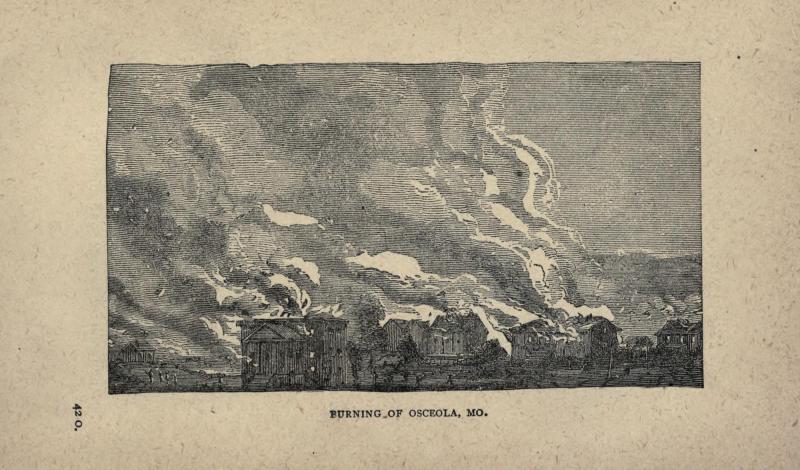
- Type: letter
- Dates: September 25 to October 6, 1861
- Significance: a military hospital steward describes caring for wounded soldiers
- Owning organization: Kansas Historical Society
- Related topics: Battle of Dry Wood Creek; Sacking of Osceola
By Jason Roe, Kansas City Public Library
The Featured Document Blog places the past in your grasp by introducing a compelling item from our digital collection.
Daniel L. Chandler, a military hospital steward for Company H, 10th Regiment of the Kansas Volunteer Infantry, wrote to a Unitarian minister and Kansas resident, John Stillman Brown, and vividly portrayed the human cost of military conflict along the Missouri-Kansas border. He described caring for wounded soldiers after the Battle of Dry Wood Creek and the Sacking of Osceola, predicted a large battle at Lexington, and reflected on whether it is "barbarous and cruel to sack and burn towns."
In September and October of 1861, Chandler's experiences took him back and forth among Mapleton in Kansas and West Point and Kansas City in Missouri. Chandler seemingly expressed concern about the harshness of the Sacking of Osceola on September 22-23, 1861, which occurred after James H. Lane lost the skirmish at Dry Wood Creek on September 2. At Osceola, Lane's 3rd, 4th, and 5th Kansas Volunteers, or "jayhawkers," destroyed much of the town, plundered its supplies, and summarily executed nine male residents in what would be remembered as one of the infamous atrocities of the border conflict. With the conflict affecting the civilian population directly, Chandler determined Missouri to be "indeed most gloomy, and if the war continues a year longer, her territory will be turned into a desert, her people will be compelled to seek homes in adjoining states; Her treatment of the population of Kansas in 55 and 56, is being visited upon her with a seven fold vengeance."
Typical of a lower-ranking member of the military, Chandler could only speculate about where they would be ordered to march next. He believed that the Confederates had assembled an army of 60,000 men in Missouri, outnumbering what he guessed was 50,000 on the Union side. On October 6, he predicted that the two sides would meet at Lexington, Missouri, "and perhaps a decisive battle, may soon be expected to take place ... so far as the Territory west of the Mississippi is concerned." From this account, it appears that Chandler did not know that a significant battle had already occurred at Lexington on September 18-20, pitting some 15,000-20,000 secessionist members of the Missouri State Guard (MSG) against just 3,500 Union defenders. Predictably, the rebels won the engagement, but it was hardly decisive on a strategic level, as the MSG had to retreat to the southwest part of the state to shorten its supply lines.
What is more certain from Chandler's account is his insight on the day-to-day aspects of military life, particularly for wounded soldiers. In one poignant passage, he described,
With regard to the wounded men, it is astonishing to think, how the human frame ... can be cut, torn and mangled and yet survive the crash, and become sound as ever, or nearly so, in such a short space of time .... At Morristown, one was shot in the back, another in the thigh, and the third, which, is the most wonderfull escape of all, received two buck-shots in the head one of which went in above the eye, making a horrid wound .... Yet with careful nursing the young man will probably survive, even such severe wounds ....
Before the first year of the Civil War concluded, a hospital steward had already witnessed some of its most astonishing and devastating aspects.


